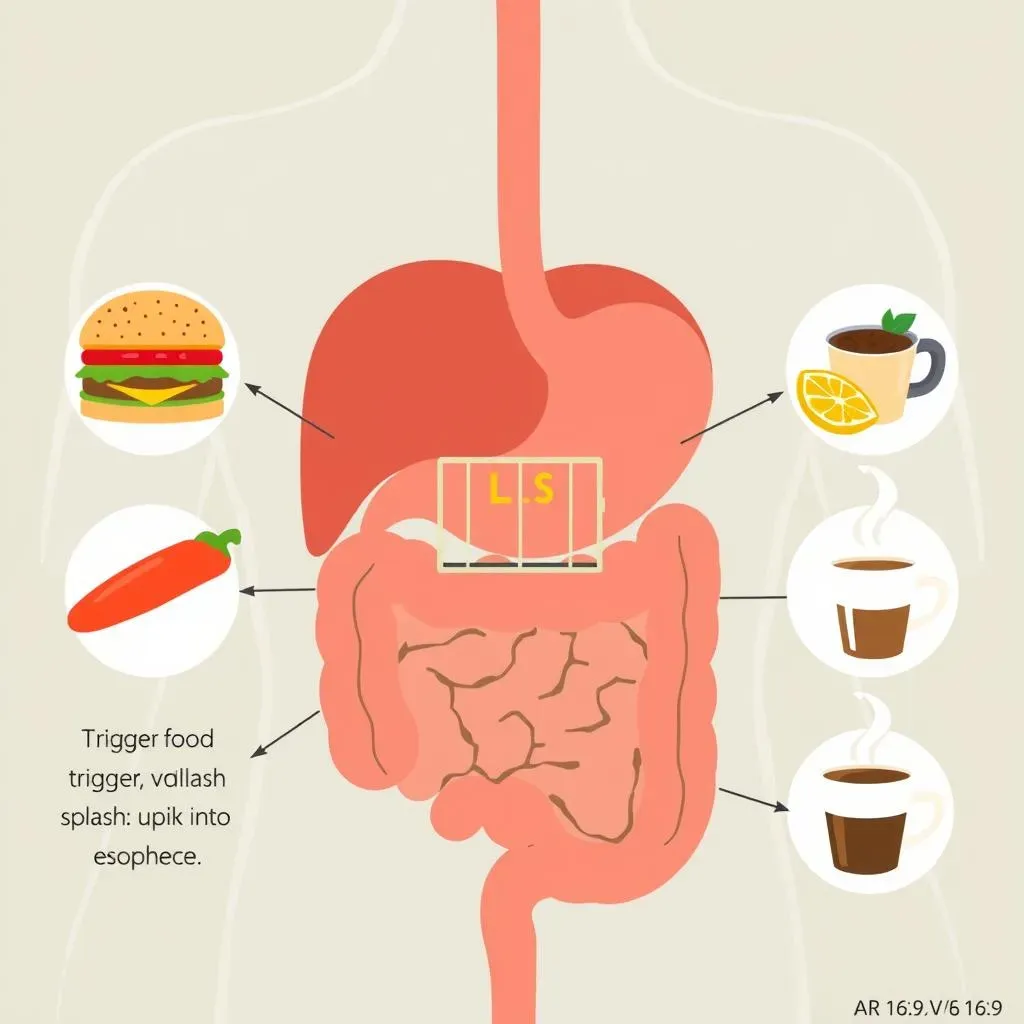Table of Contents
Dealing with the fiery discomfort of acid reflux? You're not alone. Heartburn, that burning sensation creeping up your chest, is a common woe caused by stomach acid backing up into your esophagus. Many reach for medications, but what if a simple dietary change could offer relief? That's where yogurt enters the scene. But not just any yogurt. The question on many minds is: is low fat yogurt good for acid reflux? This article dives deep into the creamy world of yogurt to uncover its potential benefits for soothing your irritated esophagus. We'll explore how yogurt, particularly the low-fat variety, can play a role in managing acid reflux symptoms. From understanding the science behind acid reflux triggers to navigating the yogurt aisle for the best options, we'll equip you with the knowledge to make informed choices. We'll also discuss how to seamlessly incorporate low-fat yogurt into your daily diet, maximizing its potential to calm your digestive system. So, if you're seeking a natural and delicious way to combat acid reflux, keep reading to discover the gut-soothing power of low-fat yogurt.
Understanding Acid Reflux and Its Triggers

Understanding Acid Reflux and Its Triggers
What Exactly is Acid Reflux?
so picture this: your stomach is like a little acid-filled cauldron, right? It needs that acid to break down food. Now, there's a gatekeeper at the top of your stomach called the lower esophageal sphincter (LES). It's supposed to keep that acid where it belongs – in your stomach. But sometimes, the LES gets a little lazy and doesn't close properly. When that happens, stomach acid can splash up into your esophagus, which is the tube that connects your mouth to your stomach. That splash is acid reflux, and it causes that burning sensation we know as heartburn.
It's not just a one-time thing for some folks. If it happens frequently, like more than twice a week, you might be dealing with gastroesophageal reflux disease, or GERD. GERD can lead to more serious problems down the road, so it's worth getting checked out by a doctor if you think you might have it. But understanding the basics is the first step in taking control.
Common Culprits Behind the Burn
Now that we know what acid reflux is, what sets it off? Turns out, a bunch of things can weaken that LES or increase acid production. Fatty foods are notorious offenders because they take longer to digest, which means more acid sloshing around for a longer time. Spicy foods can irritate the esophagus lining, making it more sensitive to acid. And then there are acidic foods like citrus fruits and tomatoes, which can directly increase the acid load in your stomach.
Lifestyle factors also play a big role. Things like obesity, smoking, and even wearing tight clothes can put extra pressure on your stomach, forcing acid upwards. Certain medications, like painkillers and some blood pressure drugs, can also contribute to acid reflux. Identifying your personal triggers is key to managing your symptoms. It's like being a detective, figuring out what's causing the crime in your gut!
- Fatty Foods: Fried items, fast food
- Spicy Foods: Hot peppers, curry
- Acidic Foods: Citrus fruits, tomatoes
- Caffeine: Coffee, tea, soda
- Alcohol: Especially red wine and beer
The Role of Yogurt in Managing Acid Reflux Symptoms

The Role of Yogurt in Managing Acid Reflux Symptoms
The Probiotic Powerhouse
Yogurt isn't just a tasty snack; it's a potential game-changer for your gut health. The magic lies in probiotics, those beneficial bacteria that live in your digestive system. These tiny organisms help maintain a healthy balance of gut flora, which can be disrupted by things like stress, poor diet, or antibiotics. An imbalance in gut flora can contribute to various digestive issues, including acid reflux. Probiotics in yogurt can help restore that balance, potentially reducing the frequency and severity of reflux episodes. Think of it as sending in the good guys to fight off the bad guys in your gut!
But it's not just about adding good bacteria. Probiotics can also help improve digestion and reduce inflammation in the gut, both of which can contribute to acid reflux. Some studies suggest that certain strains of probiotics, like Lactobacillus and Bifidobacterium, may be particularly effective in managing GERD symptoms. So, when you're choosing a yogurt, look for one that contains these beneficial strains.
Soothing and Coating Effect
Beyond the probiotic benefits, yogurt also offers a soothing and coating effect on the esophagus. Its creamy texture can help create a temporary barrier, protecting the delicate lining from the harsh effects of stomach acid. This can be especially helpful after a meal that's likely to trigger reflux. It's like applying a soothing balm to a burn, providing immediate relief and preventing further irritation.
Furthermore, yogurt has a slightly acidic pH, which can help neutralize stomach acid. While it might seem counterintuitive to consume something acidic when you have acid reflux, the acidity of yogurt is much lower than that of stomach acid. This mild acidity can help signal the LES to tighten up, preventing acid from escaping into the esophagus. It's a gentle nudge in the right direction, helping your body regulate its own acid production.
Why LowFat Yogurt Might Be Your Gut's New Best Friend

Why LowFat Yogurt Might Be Your Gut's New Best Friend
The Fat Factor: Why Low-Fat Matters
So, why low-fat specifically? Well, remember how we talked about fatty foods being acid reflux triggers? Full-fat yogurt, while delicious, can contribute to that problem. The higher fat content slows down digestion, keeping food in your stomach longer and increasing the likelihood of acid backup. Low-fat yogurt, on the other hand, digests more quickly, reducing the amount of time acid has to wreak havoc on your esophagus. It's like choosing the express lane at the grocery store – getting you through faster and with less hassle.
Plus, some studies suggest that high-fat dairy products can actually relax the LES, making it easier for acid to escape. By opting for low-fat yogurt, you're minimizing this risk and giving your LES a better chance to do its job. It's a simple swap that can make a big difference in managing your acid reflux symptoms. Think of it as a small adjustment with a potentially large payoff for your gut health.
- Faster Digestion: Reduces time for acid buildup.
- Less LES Relaxation: Helps the sphincter stay closed.
- Calorie Conscious: Often lower in calories than full-fat options.
Beyond the Fat: Additional Benefits
The benefits of low-fat yogurt extend beyond just the fat content. Many low-fat yogurts are also lower in overall calories and sugar compared to their full-fat counterparts. This can be particularly helpful if you're trying to manage your weight, as obesity is a known risk factor for acid reflux. Choosing a low-fat option allows you to enjoy the gut-soothing benefits of yogurt without sabotaging your weight management goals. It's a win-win situation for your digestive system and your waistline.
Moreover, some low-fat yogurts are fortified with additional nutrients like vitamin D and calcium, which are essential for overall health. While these nutrients don't directly address acid reflux, they contribute to your overall well-being, which can indirectly support healthy digestion. A healthy body is better equipped to handle digestive challenges, so prioritizing overall nutrition is always a good idea. It's like building a strong foundation for your gut to thrive on.
Benefit | Explanation |
|---|---|
Lower Calories | Helps with weight management, reducing reflux risk. |
Lower Sugar | Prevents sugar-induced inflammation in the gut. |
Added Nutrients | Fortified with Vitamin D and Calcium. |
How to Choose the Right Yogurt for Acid Reflux Relief

How to Choose the Right Yogurt for Acid Reflux Relief
Decoding the Label: What to Look For
Alright, so you're standing in the yogurt aisle, ready to make a gut-friendly choice. But with so many options, how do you pick the right one for acid reflux relief? First things first, check the label for the fat content. Remember, we're aiming for low-fat or non-fat varieties. Look for yogurts labeled "0% fat" or "low-fat." This is your first line of defense against triggering those reflux symptoms. It's like choosing a lighter oil for cooking – less grease, less potential for heartburn.
Next, scan the ingredients list for added sugars. Many yogurts are loaded with sweeteners, which can actually worsen inflammation in the gut and counteract the benefits of probiotics. Opt for plain, unsweetened yogurt whenever possible. You can always add your own natural sweeteners like honey or fruit if you need a little extra sweetness. It's like being in control of your own flavor destiny – adding what you want, and skipping what you don't.
- Low-Fat/Non-Fat: Check for "0% fat" or "low-fat" labels.
- Unsweetened: Choose plain yogurt to avoid added sugars.
- Live and Active Cultures: Ensure the yogurt contains beneficial probiotics.
Probiotics: The More, the Merrier?
Speaking of probiotics, make sure the yogurt you choose contains live and active cultures. This indicates that the beneficial bacteria are still alive and kicking, ready to colonize your gut. Look for specific strains like Lactobacillus and Bifidobacterium, as these have been shown to be particularly effective in managing digestive issues. However, don't get too caught up in the number of probiotic strains. A yogurt with a few well-researched strains is often better than one with a long list of unknown bacteria. It's like quality over quantity – focusing on the strains that actually make a difference.
Also, consider the source of the yogurt. Greek yogurt, for example, is strained to remove excess whey, resulting in a thicker, creamier texture and a higher protein content. Some people find Greek yogurt to be more soothing for acid reflux, while others prefer regular yogurt. Experiment to see which type works best for you. It's all about finding the yogurt that makes your gut happy. And hey, a happy gut means a happy you!
Yogurt Type | Potential Benefits | Considerations |
|---|---|---|
Greek Yogurt | Higher protein, thicker texture | Can be more acidic for some |
Regular Yogurt | Generally milder flavor | May have higher sugar content |
Plant-Based Yogurt | Dairy-free alternative | Check for added sugars and fat |
Making LowFat Yogurt a Part of Your Acid Reflux Diet

Making LowFat Yogurt a Part of Your Acid Reflux Diet
Breakfast Boost: Starting Your Day Right
So, how do you actually weave low-fat yogurt into your daily routine? Let's start with breakfast. Instead of reaching for that greasy bacon or sugary cereal, try a bowl of plain, low-fat yogurt topped with some berries and a drizzle of honey. The yogurt provides probiotics and a soothing coating for your esophagus, while the berries add fiber and antioxidants. It's a breakfast that's both delicious and kind to your digestive system. Think of it as giving your gut a gentle hug first thing in the morning.
Another great breakfast option is a yogurt parfait. Layer low-fat yogurt with granola and your favorite fruits in a glass or jar. This not only looks appealing but also provides a variety of textures and flavors. Just be sure to choose a granola that's low in sugar and fat to avoid triggering reflux. It's like creating a mini-masterpiece for your breakfast table, a feast for both your eyes and your gut.
Breakfast Idea | Ingredients | Benefits |
|---|---|---|
Yogurt with Berries | Low-fat yogurt, berries, honey | Probiotics, fiber, antioxidants |
Yogurt Parfait | Low-fat yogurt, granola, fruits | Variety of textures and flavors |
Snack Time Savior: Curbing Cravings the Healthy Way
Acid reflux can sometimes trigger cravings, especially for comfort foods that are often high in fat and sugar. Instead of giving in to those unhealthy urges, reach for a cup of low-fat yogurt. It's a satisfying and nutritious snack that can help curb your cravings without exacerbating your reflux symptoms. Plus, the protein in yogurt can help keep you feeling full and energized between meals. It's like having a secret weapon against those pesky cravings, a guilt-free indulgence that actually benefits your gut.
You can also get creative with your yogurt snacks. Try blending low-fat yogurt with some frozen fruit to make a smoothie. This is a great way to add extra nutrients and hydration to your diet. Just be sure to avoid acidic fruits like oranges or grapefruits, which can trigger reflux. Berries, bananas, and melons are generally safe choices. It's like being a smoothie artist, creating your own personalized blend of deliciousness and gut-friendliness.
Dessert Delight: A Guilt-Free Indulgence
Who says you can't enjoy dessert when you have acid reflux? Low-fat yogurt can be a fantastic base for healthy and delicious desserts. Try making a yogurt bark by spreading a thin layer of low-fat yogurt on a baking sheet, topping it with berries and nuts, and freezing it until solid. This is a refreshing and guilt-free treat that's perfect for satisfying your sweet tooth without triggering reflux. It's like creating your own frozen masterpiece, a dessert that's both beautiful and beneficial for your gut.
Another option is to use low-fat yogurt as a topping for fruit. A dollop of yogurt on a bowl of sliced peaches or baked apples can add a creamy and tangy element to your dessert. Just be sure to choose fruits that are low in acidity to avoid triggering reflux. It's like adding a touch of elegance to your dessert, a simple yet satisfying way to end your meal on a sweet note.
Conclusion: Soothing Acid Reflux with Low-Fat Yogurt
Ultimately, incorporating low-fat yogurt into your diet can be a gentle and effective strategy for managing acid reflux symptoms. Its probiotic content, coupled with its soothing texture, offers a two-pronged approach to calming an irritated esophagus. However, remember that individual responses can vary, and what works for one person may not work for another. It's crucial to listen to your body and pay attention to how different yogurts affect you. By making informed choices and integrating low-fat yogurt thoughtfully into your diet, you can potentially find significant relief from the discomfort of acid reflux and improve your overall gut health. Always consult with a healthcare professional or registered dietitian for personalized advice tailored to your specific needs and medical history.
